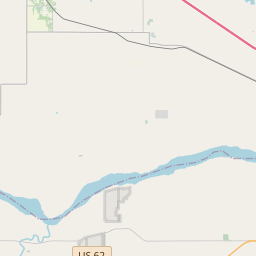Btry B 171st Field Artillery Bn / Btry C 160th Field Artillery Bn
Historical marker location:
1700 North Chickasaw Avenue, Haskell, Oklahoma
( Memorial is on Chickasaw Avenue/194th Street West (State Highway 72) 1 mile north of Haskell Boulevard (U.S. 64), on the right when traveling north.)







© OpenStreetMap contributors
45th Infantry Division
Loading...
Searching for other points of interest within 3 miles of this location.In the early 1900s, a group of African American settlers founded the town of Boley, Oklahoma. The town became a center of Black entrepreneurship and culture, with businesses ranging from banks to newspapers to theaters. Today, Boley is a small town but continues to celebrate its rich history.
About Muskogee County
Muskogee County Timeline
Muskogee County, located in eastern Oklahoma, has a rich and diverse history that stretches back centuries. The area was originally home to various indigenous tribes, including the Creek and Cherokee nations, who inhabited the region for hundreds of years. The Creek Nation played a significant role in the county's early history, with many Creek towns established along the waterways.
In the early 19th century, the area experienced an influx of European settlers, leading to tensions between the indigenous peoples and newcomers. The Trail of Tears, a forced removal of Native Americans, passed through Muskogee County during the 1830s, as many tribes were relocated to Indian Territory. This marked a dark chapter in the county's history, with a significant loss of life and land for the indigenous populations.
By the late 19th century, Muskogee emerged as a prominent city in the region. In 1872, it became the capital of the Creek Nation and later served as the headquarters of the Five Civilized Tribes' government. This brought economic prosperity to Muskogee County, as it became a hub for trade and commerce. The city's growth continued with the arrival of the railroad in the 1880s, further connecting it to the rest of the nation.
In the 20th century, Muskogee County played a crucial role in the development of Oklahoma as a whole. During World War II, Camp Gruber, a military training facility, was established in the county, preparing soldiers for combat. The county also became known for its contributions to the music industry, particularly in the development of gospel, jazz, and blues. Today, Muskogee County stands as a testament to the diverse and resilient history of Oklahoma, showcasing the struggles and triumphs of both indigenous peoples and settlers.
In the early 19th century, the area experienced an influx of European settlers, leading to tensions between the indigenous peoples and newcomers. The Trail of Tears, a forced removal of Native Americans, passed through Muskogee County during the 1830s, as many tribes were relocated to Indian Territory. This marked a dark chapter in the county's history, with a significant loss of life and land for the indigenous populations.
By the late 19th century, Muskogee emerged as a prominent city in the region. In 1872, it became the capital of the Creek Nation and later served as the headquarters of the Five Civilized Tribes' government. This brought economic prosperity to Muskogee County, as it became a hub for trade and commerce. The city's growth continued with the arrival of the railroad in the 1880s, further connecting it to the rest of the nation.
In the 20th century, Muskogee County played a crucial role in the development of Oklahoma as a whole. During World War II, Camp Gruber, a military training facility, was established in the county, preparing soldiers for combat. The county also became known for its contributions to the music industry, particularly in the development of gospel, jazz, and blues. Today, Muskogee County stands as a testament to the diverse and resilient history of Oklahoma, showcasing the struggles and triumphs of both indigenous peoples and settlers.
Muskogee County Timeline
This timeline provides a condensed summary of the historical journey of Muskogee County, Oklahoma.
- 1826 - The Creek Indians signed the Treaty of Washington, resulting in the relocation of their territory to what is now Muskogee County.
- 1872 - The Missouri-Kansas-Texas Railroad (MKT) arrived in Muskogee, leading to the city's rapid growth and development.
- 1889 - Muskogee County was officially established as a county in Oklahoma Territory.
- 1907 - Oklahoma became a state, and Muskogee County remained an important transportation hub due to its rail connections.
- 1921 - The Tulsa Race Massacre occurred, impacting neighboring Tulsa but affecting Muskogee County as well.
- 1942 - Camp Gruber was established in Muskogee County as a U.S. Army training camp during World War II.
- 1950s - The Civil Rights Movement began to bring about social changes in Muskogee County and the rest of Oklahoma.
- 1969 - Muskogee's Honor Heights Park started hosting an annual Azalea Festival, attracting visitors from across the state.
- 1998 - The Port of Muskogee, an inland port on the Arkansas River, became an important transportation and industrial center.
- 2007 - A tornado caused significant damage to Muskogee County, including the city of Muskogee.